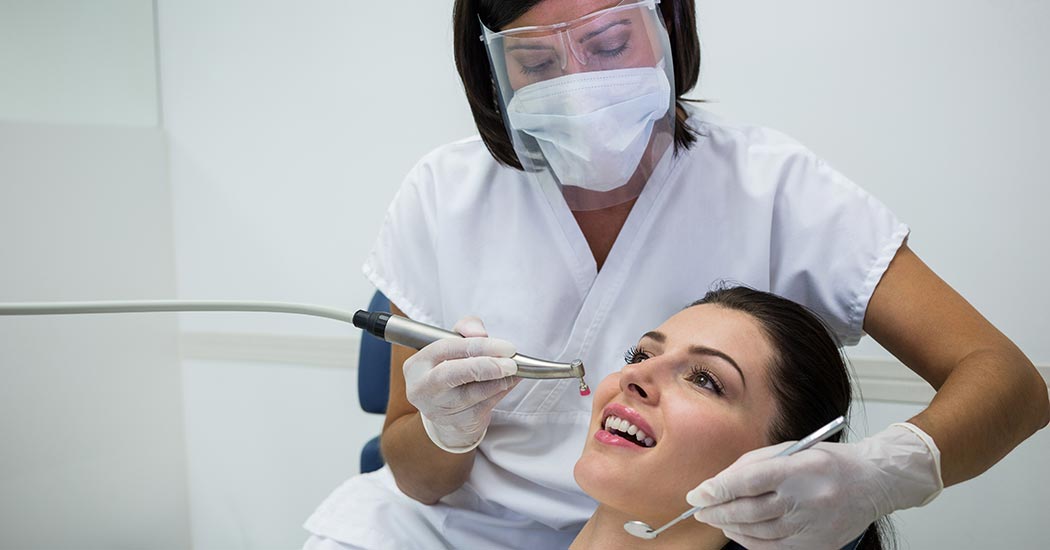What is cosmetic dentistry?
Cosmetic dentistry is a broad term that describes dental procedures that change the appearance of your teeth.
You may want to:
- change the colour, shape or position of your tooth or teeth
- replace a missing tooth or teeth.
Before you start treatment
Before you start any cosmetic dental procedures, it is important to see a dentist to check your whole mouth thoroughly. This is to:
- Treat any disease first. Your health is the priority.
- Find out what is causing the unsatisfactory appearance of your teeth.
- Talk about the range of treatment options.
- Work out a realistic plan that suits you.
What is important to you?
Before you see your dentist, think about:
- What you like and don’t like about the appearance of your teeth.
- Any symptoms you may have, such as pain or difficulty eating.
- Treatment you have had in the past and whether you were happy with it or not.
- What you would like to change. Bring a photo if it helps; for example, how your teeth used to look before they were chipped.
- How much time and money you would be prepared to invest. If you have private health insurance, check what sort of dental treatment is covered.
- How much effort you would be prepared to put into looking after your teeth at home in the future.
It may be useful to write your thoughts down.
Treatment options
Whitening
What is it?
- A bleaching gel is applied onto the tooth surface.
What does it do?
- Lightens the colour of tooth enamel.
How is it done?
- In the dental clinic – high concentration gel is painted on the teeth for about an hour.
- At home – put the gel in a custom-fit whitening mouthguard and wear it for a few hours or overnight, for around 1 to 2 weeks.
- A third type of whitening (called ‘internal whitening’) is specifically for teeth that have discoloured after root canal treatment and involves putting the bleach inside the tooth in the dental clinic.
- Products you can buy at supermarkets and chemists may use a similar ingredient but only contain a small amount, so it is not as effective.
Filling using resin composite
What is it?
- Resin composite is a tooth-coloured material that is glued (bonded) onto the tooth.
What does it do?
- Repairs chips, holes or decay in the tooth.
- Replaces old fillings that have discoloured or broken.
- Covers up some defects on the surface of the tooth.
How is it done?
- The tooth is prepared, removing decay and old fillings where needed. The resin composite material is placed directly on the tooth and set immediately with a light. The surface is polished smooth so your bite feels natural.
- It is one of the fastest treatment options and is usually completed in one appointment.
What are the main risks?
- It can chip or fall out and need replacing again.
- Colour options are more limited so it may be hard to get a good match.
Veneer
What is it?
- A thin covering over the outer surface of the tooth. It can be made from tooth-coloured resin composite material or ceramic.
What does it do?
- Covers up some defects on the surface of tooth.
- Changes the colour and shape of the tooth.
How is it done?
- The tooth is prepared, removing decay and old fillings where needed.
- A thin layer of tooth may be removed from the surface of the tooth to make space for the material.
- For resin composite veneers, the material is placed directly on the tooth and polished smooth, usually in one visit.
- For ceramic veneers, a mould (impression) of the tooth is taken and sent to a lab for the ceramic to be custom-made. A second appointment is usually needed to glue in the ceramic. Some clinics have lab equipment on site and may be able to finish it on the day.
Crown
What is it?
- A metal or ceramic shell that is placed over the entire tooth to fully cover the tooth.
What does it do?
- Changes the colour and shape of the tooth.
- Protects the tooth, which may have been weakened by large fillings or decay in the past.
How is it done?
- The tooth is prepared, removing decay and old fillings where needed.
- A thin layer of tooth may be removed from the top and all around the tooth to make space for the material.
- A mould (impression) of the tooth is taken and sent to a lab for the crown to be custom-made. A second appointment is usually needed to glue in the crown, so a temporary crown will be provided. Some clinics have lab equipment on site and may be able to finish it on the day.
Bridge
What is it?
- Metal or ceramic crowns that are joined together to replace one or more missing teeth. At least one of the crowns needs to be on an existing tooth – ideally the replacement crown would be supported on both sides, not just one.
What does it do?
- Replaces a missing tooth or teeth.
- Changes the colour and shape of the teeth involved.
How is it done?
- The teeth next to the gap are prepared, removing decay and old fillings where needed. A thin layer of tooth may be removed from the top and all around the tooth to make space for the material.
- A mould (impression) of the tooth is taken and sent to a lab for the bridge to be custom-made. A second appointment is usually needed to glue in the bridge, so a temporary bridge will be provided. Some clinics have lab equipment on site and may be able to finish it on the day.
Implant
What is it?
- A dental implant is made of 2 main parts – a titanium screw that fuses with the jaw bone, and a ceramic tooth that fits over the screw.
What does it do?
- Replaces a missing tooth or teeth, without damaging neighbouring teeth.
How is it done?
- The area of the missing tooth needs to be studied to make sure it is suitable for an implant. This includes looking at the gum and bone health, amount of space, your bite, and your general health.
- The titanium screw is placed into the jaw bone.
- It can take up to 6 months for the bone to fuse strongly to the screw. A temporary, removable tooth may be provided for you to wear in the meantime.
- When the bone is ready, a mould (impression) of the screw’s position in your jaw is taken and sent to a lab for the ceramic tooth to be custom-made.
- The tooth is attached to the screw.
Dentures
What is it?
- Removable Acrylic Material to replace a missing tooth or teeth.
- The base plate may be made from acrylic (which is cheaper) or cobalt-chrome metal (which is thinner and stronger but more expensive).
- Full dentures are for people who have no teeth left at all. Partial dentures are for people who have one or more teeth left.
What does it do?
- Replaces a missing tooth or teeth.
- This is the most cost-effective way of replacing multiple teeth.
How is it done?
- A few moulds (impressions) and measurements are taken over several appointments to make a wax denture for you to try in.
- Once you and your dentist are happy with the colour, shape and position of the wax denture, it is sent to a lab to set in acrylic.
- Another appointment is needed to fit the denture in your mouth and make some adjustments.
- Often, more adjustments are needed over the next few weeks. It can take some time to get used to the way the denture rubs on your gums.
Braces (orthodontic treatment)
What is it?
- Orthodontic treatment is about moving teeth into a preferred position.
- It may involve:
- Braces – clips and wires that are glued onto the teeth during treatment and removed after teeth are in the final position.
- Removable clear aligners – thin plastic trays that fit over the teeth, to be changed every few weeks.
- Plates – may be plastic or metal, removable or glued in.
What does it do?
- Changes the position of the teeth, often to fix rotated, crowded, overlapping or misaligned teeth.
- Corrects bite problems, such as where upper and lower teeth do not meet together properly.
How is it done?
- Moulds (impressions) and x-rays are taken to study your teeth and jaws.
- In some cases, some teeth may need to be removed to create space.
- Whether braces, aligners or plates are used, multiple appointments are needed to check that the teeth are moving in the right way.
- Treatment time can range from 6 months to a few years.
- After treatment is finished, it is usually recommended that retainers are used to keep the teeth in the same position. These may be removable clear trays, or a wire glued to the back of the teeth.



